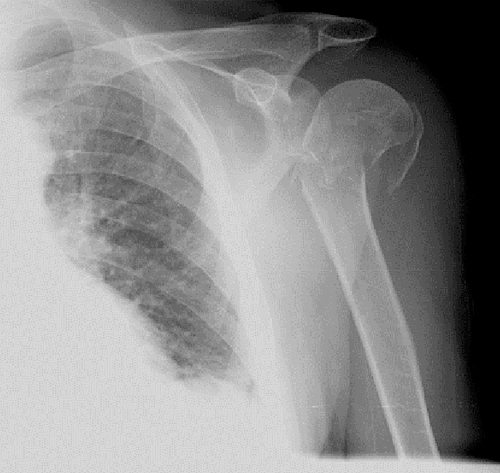Shoulder Case 5 Background
The Neer classification system is useful to characterize proximal humerus fractures and determine the urgency of orthopedic follow up and ultimate management.
To apply the Neer classification you need to know:
- Fractures sites: surgical neck, anatomical neck (very rare), greater tuberosity, and lesser tuberosity.
- Degree of displacement > 1cm or angulation > 45°
Fractures are then classified as one part, two part, three part or four part:
One-part fractures include fractures at any of these sites that are not displaced (> 1cm) or angulated (>45°). One-part fractures account for 80% of all proximal humerus fractures.
A two-part fracture has one displaced or angulated fracture line (which can be through either tuberosity or the neck).
A three-part fracture includes a displaced fracture of the surgical neck plus a displaced fracture of the greater tuberosity (in this case) or lesser tuberosity.
A four-part fracture includes a displaced surgical neck plus a displaced greater tuberosity and displaced lesser tuberosity.
